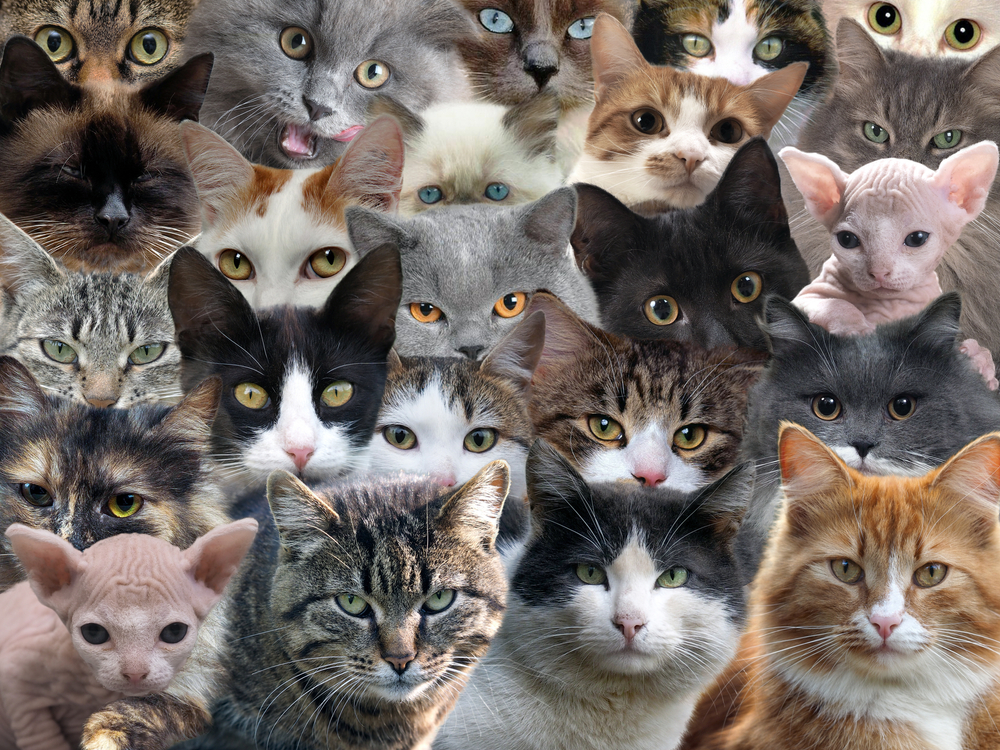Cat Genetics: Unraveling the Mysteries of Coat Colors and Patterns
Cat coat colors and patterns tell the story of their genetic history. Each spot or stripe is a memory of a cat that lived before. Many biological factors determine how a cat will look, which is why one litter can have such a wide variety of appearances. Keep reading to learn more about cat genetics and how they affect a cat’s coat colors and patterns:

The Many Coats of Cats
Cat coats can differ in length and texture. They are broken down into the following categories:
- Length: Cats will either be hairless, have short coats, or long coats
- Texture: Some cats have curly coats, some have wirehair, and others have a double coat. Coats can also be considered smooth, which often appear shinier than others.
Cats might have different combinations of length and texture to create their unique coats. Knowing what type of coat your cat has makes it easier to care for it and keep it healthy.
Coats of Many Colors
Cat coats can be found in endless combinations of seven solid colors. These are:
- Black
- Blue/gray
- White
- Cream
- Cinnamon
- Chocolate
- Orange
Some cats have solid coats, while others have spots of color splashed throughout. Others have multicolored stripes. Some are even half one color and half another. The possibilities are truly endless when it comes to coat color for cats.
Coat Patterns
Cats also have a variety of patterns for their coats. These include:
- Solid
- Tuxedo
- Color point
- Calico
- Tortoiseshell
- Tabby
- Torbie
- Rosette
It’s In the Genes
How cats get their coats has been a mystery up until very recently. In 2021, scientists discovered the presence of a gene called DKK4, which they believe is responsible for a cat’s coat appearance. A cat’s color develops in two distinct ways. The first is when a pattern forms as the embryo develops, and the second teaches the genes how to produce a specific pigment within the hair follicles. Darker cats have pigment everywhere, while white cats have very little. While it is still unclear exactly how this gene determines the type and color of the coat, scientists do know it works closely with specific proteins to develop these patterns.
The Secret Is in the Fur
At one point in time, looking at a cat’s coat could tell a lot more about its breed. Since so many cats have crossbred, now it is very hard to determine where a cat comes from just by how he looks. Today’s cats might have coat patterns that were once very unlikely for their breed. The physical appearance of a cat’s coat might not tell us much about where he comes from, but it’s still fun to see the many varieties of domestic felines in the modern world thanks to cat genetics.
At Oakland Veterinary Referral Services, we believe pet resources are just as important as exemplary veterinary care. In addition to our specialty and emergency veterinary services, we offer a library of helpful tips for pet owners. Please call (248) 334-6877 to learn more or to schedule an appointment.


